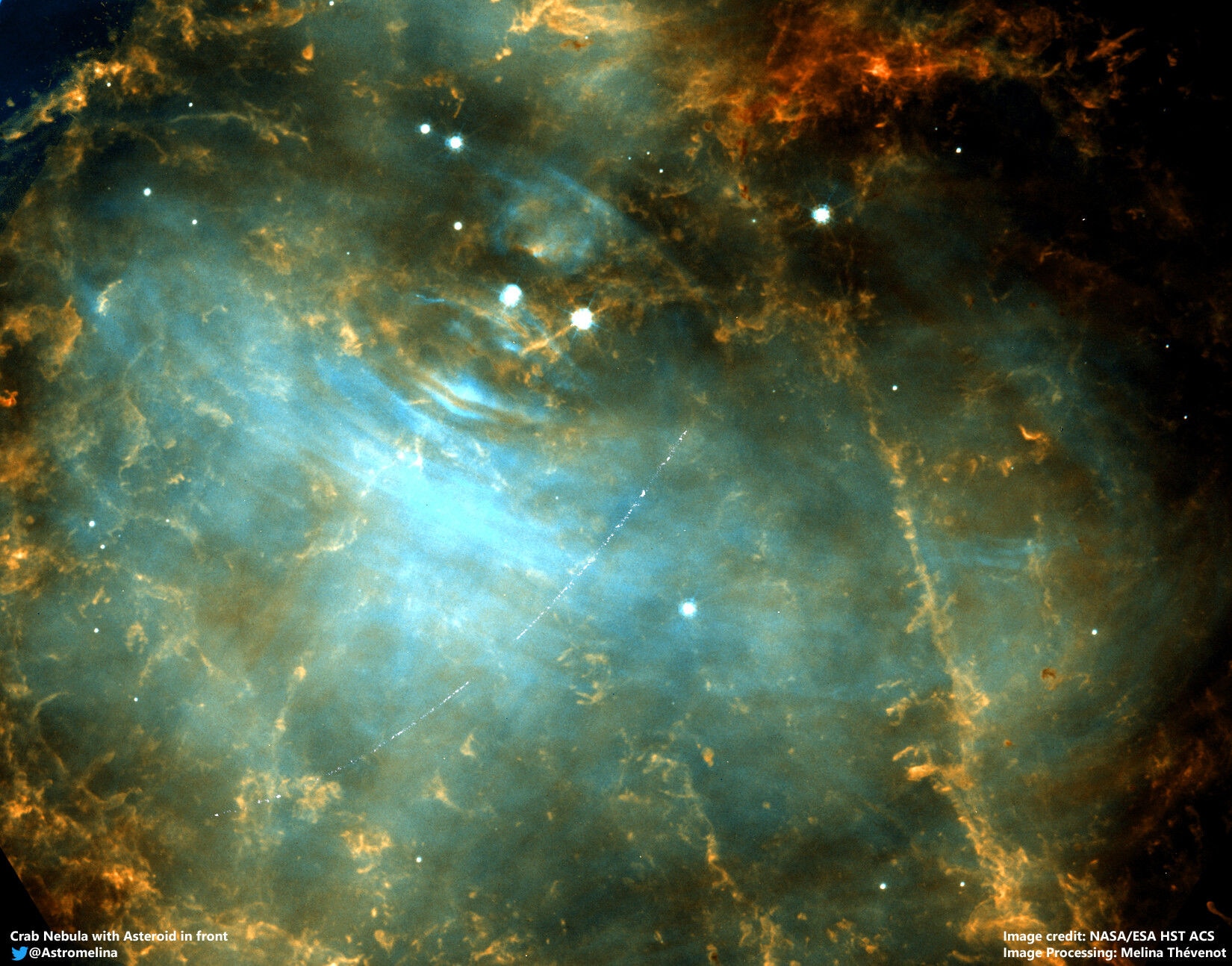Create a free profile to get unlimited access to exclusive videos, sweepstakes, and more!
Citizen scientists find asteroids in Hubble images

Asteroids are chunks of rock and metal left over from the formation of the solar system, battered and shattered, orbiting the Sun all over the place, but with the vast majority of big ones between the orbits of Mars and Jupiter.
Hubble Space Telescope is an Earth-orbiting observatory that looks at objects all over the Universe, which appear all over the sky. Above Earth's atmosphere it has darker skies and sharp eyesight, allowing it to peer deeply into space.
Put these two things together, and you get a lot of asteroids bumbling their way into Hubble's observations.
This is actually a huge pain if, say, you're trying to get extremely deep images of a cluster of galaxies. Asteroids leave streaks in the image, messing it up. No wonder astronomers used to call them "vermin of the sky"!
But if you're actually trying to find asteroids and characterize their physical properties and orbits, then Hubble's archive is a treasure trove of data. However, there are thousands upon thousands of images, far too many for a handful of astronomers to go through… and the tracks asteroids leave in images are very hard for computers to identify automatically.
Knowing that, a group of astronomers set up a project called Hubble Asteroid Hunter (as part of the larger Zooniverse project), where people who aren't astronomers could log in, look at Hubble images, and ID asteroids in the observations. This sort of thing is called "citizen science", and it's remarkable how little training it takes to get really good results from non-scientists. There are many such projects (including looking at craters on the Moon and big asteroids, spiral arms in galaxies to see which way they're oriented, and lots more), and it generally only takes a few minutes to get people up and running to use them.
In this case, volunteers for the project looked for gently curved streaks of light. Hubble orbits the Earth, which orbits the Sun, at the same time the asteroid is orbiting the Sun as well. During a long exposure an asteroid appears to move in the image, leaving a streak, but all those motions combined curve the streak in different ways.
Hubble Asteroid Hunter was launched in the last week of June 2019, and within six weeks 1,900 volunteers had signed up and looked at thousands of images, checking them to see if they had asteroid trails in them or not. In the end, over 2,000 trails were found!*
The beauty of this is that the images from Hubble were specifically chosen because software predicted there could be an asteroid in them. Once as asteroid is discovered using a ground-based telescope, say, observations taken over many weeks or months can be used to get a pretty good handle on its orbit. This can then be used to calculate where it will be in the future, and where it was in the past. If its path happened to pass through a Hubble field of view when it was observing, then that asteroid might get seen by the observatory. It's not a 100% certainty, because there's some uncertainty in orbit calculation, and it's possible the asteroid passed outside of Hubble's view.
Still, a lot of asteroids were found by the volunteers. Hubble's observations are so good that these can be used to tighten up the orbital measurements considerably, meaning we can have much better understanding of the asteroids' positions. Given that some small fraction of these could get near Earth, and a smaller fraction might hit us, this is A Good Thing.
Many years ago, when I worked on Hubble, I found an asteroid in one of our images. I was so excited! I was able to get some basic data on it, and I had hopes I could name it… but alas, reality had other plans. You can read that story in an article I wrote a while back. I still smile ruefully over that day every now and again.
But I'm glad so many asteroids were able to be better characterized with this project! This is important work. I also wonder how many smallish, previously undiscovered asteroids are in these images too (like the one I found), too faint for follow-up and with too short an observation span to get a decent orbital measurement for them — it usually takes observations over many days at least to be able to calculate the orbital shape.
Perhaps that's a task for another time. This project is a good start and I'll be interested in finding out the results when they publish them. And I hope something like this can be extended to every observatory that maintains its observations in a searchable database. It's a very big sky, and the more eyes we have on it, the better.
[Correction (17 Oct. 2019): I originally wrote that 300,000 trails were identified. This is not the case. Every time a volunteer looks at an image and decides whether or not a trail is present is calld a classification. Each image is screened by multiple volunteers, so in total there were 300,000 classifications (positive and negative) made, resulting in 2,000 trails identified.]




























